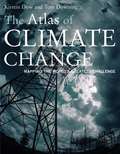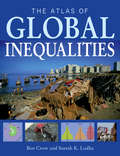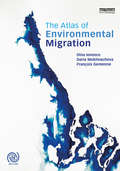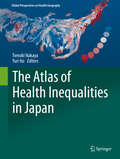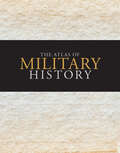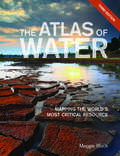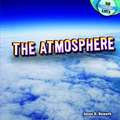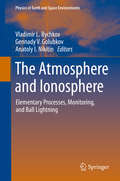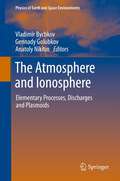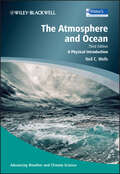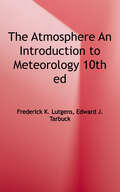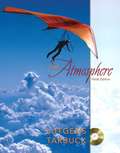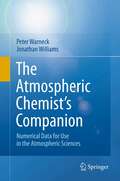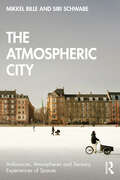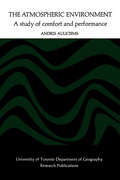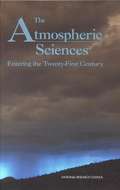- Table View
- List View
The Asian Megacity Region: A Conceptual Approach (The Urban Book Series)
by Debnath MookherjeeThis book argues that close and disciplined scrutiny of the Asian megacity regions is of critical importance to understanding Asian urbanization. However, any approach to studying these regions must adopt a multi-dimensional and trans-urban perspective; otherwise, we Without such an approach, we cannot truly make meaningful decisions about growth management and sustainable development for such regions. Amidst the sweeping demographic and structural shifts produced by global urbanization, Asian urbanization has a fascinating and prominent role. Asian urbanization is heterogeneous, and more accurately constitutes “phenomena” than a “phenomenon.” However, despite this diversity, there are certain common features that we can identify. One of them is the Asian “megacity region”— the administrative and/or delineated territory of mixed urban-rural landscape surrounding a giant metropolis.The purpose of this book is to: Understand the main features of 21st century urbanization Note the limitations of current approaches (e.g. disparate scales, city-centric views, inadequate data sets)Articulate a pragmatically framed three-pronged approach (scale-based, trans-urban, multi-dimensional)Demonstrate the application of such an approach with a case study of one of the most important megacity regions in South Asia, the Delhi National Capital Region, underscoring the methodological requirements of such an approach Discuss the next steps for the field as a whole: questions to be raised and directions to be explored for further study. This timely, conceptual and empirical book will appeal to students of urbanization, architects involved in urban policy and planning, and researchers alike.
The Asian Tsunami and Post-Disaster Aid
by Sunita ReddyThrough the lens of the Asian tsunami, this book problematizes concepts that are normally taken for granted in disaster discourse, including relief, recovery, reconstruction and rehabilitation. The unprecedented flow of humanitarian aid after the Asian tsunami, though well-intentioned, showed adverse effects and unintended consequences in the lives of people in the communities across nations. Aid led not only to widespread relief and recovery but also to an exacerbation of old forms of inequities and the creation of new ones arising from the prioritization, distribution and management of aid. This, in turn, led to the incongruity between the needs and expectations of the affected and the agendas of aid agencies and their various intermediaries. This book examines the long-term consequences of post-disaster aid by posing the following questions: What has the aid been expended on? Where has the aid primarily been expended, and how? And what were the unintended consequences of post-disaster aid for the communities? This topical volume is of interest to social scientists, human rights and law researchers and environmental scientists interested in disaster studies.
The Asteroid Impact Connection of Planetary Evolution
by Andrew Y. GliksonWhen in 1981 Louis and Walter Alvarez, the father and son team, unearthed a tell-tale Iridium-rich sedimentary horizon at the 65 million years-old Cretaceous-Tertiary boundary at Gubbio, Italy, their find heralded a paradigm shift in the study of terrestrial evolution. Since the 1980s the discovery and study of asteroid impact ejecta in the oldest well-preserved terrains of Western Australia and South Africa, by Don Lowe, Gary Byerly, Bruce Simonson, Scott Hassler, the author and others, and the documentation of new exposed and buried impact structures in several continents, have led to a resurgence of the idea of the catastrophism theory of Cuvier, previously largely supplanted by the uniformitarian theory of Hutton and Lyell. Several mass extinction of species events are known to have occurred in temporal proximity to large asteroid impacts, global volcanic eruptions and continental splitting. Likely links are observed between asteroid clusters and the 580 Ma acritarch radiation, end-Devonian extinction, end-Triassic extinction and end-Jurassic extinction. New discoveries of ~3.5 - 3.2 Ga-old impact fallout units in South Africa have led Don Lowe and Gary Byerly to propose a protracted prolongation of the Late Heavy Bombardment (~3.95-3.85 Ga) in the Earth-Moon system. Given the difficulty in identifying asteroid impact ejecta units and buried impact structures, it is likely new discoveries of impact signatures are in store, which would further profoundly alter models of terrestrial evolution. .
The Atlantic Coast
by Wayne Barrett Harry ThurstonThe North Atlantic coast of North America-commonly known as the Atlantic Coast-extends from Newfoundland and Labrador through the Maritime Provinces and the Northeastern United States south to Cape Hatteras. This North Atlantic region belongs to the sea. The maritime influence on climate, flora, and fauna is dominant - even far inland. Both on land and at sea, this region is where north meets south, where the great northern boreal forests intermingle with the southern coniferous-hardwood forests, and where the icy Labrador Current and the tropical Gulf Stream vie for supremacy and eventually mix. The Atlantic Coast draws upon the best and most up-to-date science on the ecology of the region as well as the author's lifetime experience as a resident, biologist, and naturalist. The book explores the geological origins of the region, the two major forest realms, and the main freshwater and marine ecosystems, and describes the flora and fauna that characterize each habitat. It ends with a look at what has been lost and how the remaining natural heritage of the region might be conserved for the future.
The Atlantic Forest: History, Biodiversity, Threats and Opportunities of the Mega-diverse Forest
by Marcia C. M. Marques Carlos E. V. GrelleThe Atlantic Forest is one of the 36 hotspots for biodiversity conservation worldwide. It is a unique, large biome (more than 3000 km in latitude; 2500 in longitude), marked by high biodiversity, high degree of endemic species and, at the same time, extremely threatened. Approximately 70% of the Brazilian population lives in the area of this biome, which makes the conflict between biodiversity conservation and the sustainability of the human population a relevant issue. This book aims to cover: 1) the historical characterization and geographic variation of the biome; 2) the distribution of the diversity of some relevant taxa; 3) the main threats to biodiversity, and 4) possible opportunities to ensure the biodiversity conservation, and the economic and social sustainability. Also, it is hoped that this book can be useful for those involved in the development of public policies aimed at the conservation of this important global biome.
The Atlas of Abandoned Places
by Oliver SmithThe globe is littered with forgotten monuments, their beauty matched only by the secrets of their past.A glorious palace lies abandoned by a fallen dictator. A grand monument to communism sits forgotten atop a mountain. Two never-launched space shuttles slowly crumble, left to rot in the middle of the desert. Explore these and many more of the world's lost wonders in this atlas like no other.With remarkable stories, bespoke maps and stunning photography of fifty forsaken sites, The Atlas of Abandoned Places travels the world beneath the surface; the sites with stories to tell, the ones you won't find in any guidebook.Award-winning travel writer Oliver Smith is your guide on a long-lost path, shining a light on the places that the world forgot.Locations featured in the book include:Europe: Maunsell Forts, Aldwych Station, Paris Catacombs, La Petite Ceinture, Craco, Teufelsberg, Beelitz-Heilstätten, Red Star Train Graveyard, Pyramiden, Salpa Line, Buzludzha Monument, Pripyat, Wolf's Lair, Project Riese, Sarajevo Bobsleigh Track, Albanian Bunkers, Rummu QuarryThe Americas & the Carribean: New Bedford Orpheum Theatre, City Hall Station, Bodie, The Boneyards of Western USA, Bannerman Castle, Palace of Sans Souci, Montserrat Exclusion Zone, Ciudad Perdida, Humberstone and Santa Laura, Uyuni Train Cemetery, FordlândiaThe Middle East & the Caucasus: Kayaköy, Burj Al Babas, Varosha, Tskaltubo, Palaces of SaddamAsia: Ryugyong Hotel, Buran at Baikonur, Mo'ynoq Ship Graveyard, Aniva Lighthouse, Hô' Thuy Tiên Waterpark, Fukushima Red Zone, HashimaOceania: Wittenoom, Wrecks of Homebush Bay, Port Arthur, MS World Discoverer, Second World Remains of Papua New GuineaAfrica: Shipwrecks of the Skeleton Coast, Kolmanskop, Mobutu's Gbadolite, Mos Espa, São Martinho dos Tigres
The Atlas of Abandoned Places
by Oliver SmithThe globe is littered with forgotten monuments, their beauty matched only by the secrets of their past.A glorious palace lies abandoned by a fallen dictator. A grand monument to communism sits forgotten atop a mountain. Two never-launched space shuttles slowly crumble, left to rot in the middle of the desert. Explore these and many more of the world's lost wonders in this atlas like no other.With remarkable stories, bespoke maps and stunning photography of fifty forsaken sites, The Atlas of Abandoned Places travels the world beneath the surface; the sites with stories to tell, the ones you won't find in any guidebook.Award-winning travel writer Oliver Smith is your guide on a long-lost path, shining a light on the places that the world forgot.Locations featured in the book include:Europe: Maunsell Forts, Aldwych Station, Paris Catacombs, La Petite Ceinture, Craco, Teufelsberg, Beelitz-Heilstätten, Red Star Train Graveyard, Pyramiden, Salpa Line, Buzludzha Monument, Pripyat, Wolf's Lair, Project Riese, Sarajevo Bobsleigh Track, Albanian Bunkers, Rummu QuarryThe Americas & the Carribean: New Bedford Orpheum Theatre, City Hall Station, Bodie, The Boneyards of Western USA, Bannerman Castle, Palace of Sans Souci, Montserrat Exclusion Zone, Ciudad Perdida, Humberstone and Santa Laura, Uyuni Train Cemetery, FordlândiaThe Middle East & the Caucasus: Kayaköy, Burj Al Babas, Varosha, Tskaltubo, Palaces of SaddamAsia: Ryugyong Hotel, Buran at Baikonur, Mo'ynoq Ship Graveyard, Aniva Lighthouse, Hô' Thuy Tiên Waterpark, Fukushima Red Zone, HashimaOceania: Wittenoom, Wrecks of Homebush Bay, Port Arthur, MS World Discoverer, Second World Remains of Papua New GuineaAfrica: Shipwrecks of the Skeleton Coast, Kolmanskop, Mobutu's Gbadolite, Mos Espa, São Martinho dos Tigres
The Atlas of African Affairs
by Ieuan L.l. GriffithsThe Atlas of African Affairs is divided into five sections dealing with environmental, historical, political and economic issues and with Southern Africa. Throughout, the book presents an interdisciplinary, integrated perspective on African affairs. Most of the chapters deal with continent-wide themes and are illustrated by maps of Africa as a whole drawn to a standardised outline of the same map projection and scale. Other chapters, often by way of example, discuss parts of the continent or individual countries and are illustrated with appropriate maps. The basic format of integrated text and maps is supplemented by guides to further reading at the end of each section as well as a series of detailed statistical tables at the end of the book.
The Atlas of Climate Change: Based on SEAP-CMIP5
by Fumin Ren Jianbin Huang Wenjie Dong Yan Guo"The Atlas of Climate Change--Based on SEAP-CMIP5" is intended to satisfy readers' curiosity: how will our climate system change over the next 100 years? It is the first showcase for the state-of -the-art earth system models that released their CMIP5 simulations for the IPCC AR5.The atlas focuses on both the past climate system change from 1850 and the projection of the future climate system change to 2100 using the RCP2.6, RCP4.5 and RCP8.5 scenarios based on climate models. This provides the research and application community interested in the impact of climate change on fields such as agriculture, ecosystem, environment,water resources, energy, health, economy, risk governance and international negotiation, etc. with the newest climate change projection information. Additionally, the atlas will show the historical responsibility of the developed/developing countries and possible contributions to the mitigation of climate change according to their pledge of GHG emission reduction after the Cancun Agreement as an extension numerical experiment to CMIP5 with NCAR's CESM1.0. The authors will update this atlas after future releases of CMIP5 model outputs and update the figures in the second edition of the atlas in 2012-2013. Both Prof. Wenjie Dong and Yan Guo work at the Beijing Normal University, China. Prof. Fumin Ren works at the China Meteorological Administration, China. Prof. Jianbin Huang works at the Tsinghua University, China.
The Atlas of Climate Change: Mapping the World's Greatest Challenge
by Kirstin Dow Thomas E. DowningThis is an essential resource for policy makers, environmentalists, students, and everyone concerned with this pressing subject.
The Atlas of Climate Change: Mapping the World's Greatest Challenge
by Kirstin Dow Taylor DowningThis highly acclaimed atlas distills the vast science of climate change, providing a reliable and insightful guide to this rapidly growing field. Since the 2006 publication of the first edition, climate change has climbed even higher up the global agenda. This new edition reflects the latest developments in research and the impact of climate change, and in current efforts to mitigate and adapt to changes in the world's weather.The atlas covers a wide range of topics, including warning signs, vulnerable populations, health impacts, renewable energy, emissions reduction, personal and public action. The third edition includes new or additional coverage of a number of topics, including agreements reached in Copenhagen and Cancun, ocean warming and increased acidity, the economic impact of climate change, and advantages gained by communities and business from adapting to climate change. The extensive maps and graphics have been updated with new data, making this edition once again an essential resource for everyone concerned with this pressing subject.
The Atlas of Environmental Migration
by François Gemenne Dina Ionesco Daria MokhnachevaAs climate change and extreme weather events increasingly threaten traditional landscapes and livelihoods of entire communities the need to study its impact on human migration and population displacement has never been greater. The Atlas of Environmental Migration is the first illustrated publication mapping this complex phenomenon. It clarifies terminology and concepts, draws a typology of migration related to environment and climate change, describes the multiple factors at play, explains the challenges, and highlights the opportunities related to this phenomenon. Through elaborate maps, diagrams, illustrations, case studies from all over the world based on the most updated international research findings, the Atlas guides the reader from the roots of environmental migration through to governance. In addition to the primary audience of students and scholars of environment studies, climate change, geography and migration it will also be of interest to researchers and students in politics, economics and international relations departments.
The Atlas of Health Inequalities in Japan (Global Perspectives on Health Geography)
by Tomoki Nakaya Yuri ItoThis new health atlas of Japan presents a series of maps about the health of the contemporary Japanese population, i.e. detailed maps of health indicators in small areas using cartograms. This is the first comprehensive small-area based health atlas about contemporary Japan using vital statistics from 1995-2014. Each map is supplemented with concise explanations written by leading epidemiologists and health geographers in Japan. The book employs various cutting-edge methods in spatial epidemiology, Bayesian spatial smoothing for the reliable mapping of mortality indices, advanced cartographic transformations using the concept of aerial cartograms, and summary statistics of socioeconomic health inequalities. The atlas highlights geographical aspects of social gradients in health by comparing mortality maps with distribution of deprivation index during the recent long-lasting economic stagnation period of Japan known as the lost decades. This health atlas will be a useful resource for international comparisons between Japan and other advanced countries in terms of health and related socioeconomic disparities between regions. It will be of interest to public health practitioners, administrators, researchers and students working on health geography and public health.
The Atlas of Military History: An Around-the-world Survey Of Warfare Through The Ages
by Amanda LomazoffA comprehensive guide to the armed conflicts that have shaped our civilizations and our lives.Aggression. Disruption. Violence. Mortality. The components of war are familiar to us all, but it&’s often hard to understand how these battles throughout history continue to affect us today. The story of our world, from its earliest beginnings thousands of years BCE to today, is the often the story of our conflicts.The Atlas of Military History offers a fascinating look at the many wars that have been fought over land, independence, and other factors all over the globe. Organized into sections based on location and then in chronological order, this compendium covers everything from the Punic Wars in Carthage that began in 247 BCE, to the conquest of Constantinople in 1453, to World War II, to the recent Arab Spring. Full-color photos and maps, as well as highlighted sections on legendary leaders, battles, and weapons, are included. Perfect for students or anyone wanting to know more about this important aspect of our world, the Atlas of Military History is a complete portrait of our conflicts and resolutions.
The Atlas of Water: Mapping the World's Most Critical Resource
by Maggie BlackClimate change, population increase, and the demands made by the growing number of people adopting urban lifestyles and western diets threaten the world's supply of freshwater, edging us closer to a global water crisis, with dire implications for agriculture, the economy, the environment, and human health. Completely revised and updated, The Atlas of Water is a compelling visual guide to the state of this life-sustaining resource. Using vivid graphics, maps, and charts, it explores the complex human interaction with water around the world. This vibrant atlas addresses all the pressing issues concerning water, from water shortages and excessive demand, to dams, pollution, and privatization, all considered in terms of the growing threat of an increasingly unpredictable climate. It also outlines critical tools for managing water, providing safe access to water, and preserving the future of the world's water supply.
The Atmosphere
by Jason D. NemethWe have the many layers of gases that surround our planet to thank for making Earth a habitable place. This instructive volume explains how Earth's atmosphere warms the planet, moderates its diurnal and nocturnal temperatures, and protects it from harmful rays. The book discusses how Earth's atmosphere evolved over time and presents the ways scientists have learned about these changes. Special attention is paid to the changes in the atmosphere that people have caused over the last two centuries, making this a very timely and topical read.
The Atmosphere and Ionosphere
by Vladimir L. Bychkov Gennady V. Golubkov Anatoly I. NikitinFrom July 7 to 12, 2008 in Zelenogradsk, a cosy resort on the bank of the Baltic Sea near Kaliningrad in Russia, the 1st International Conference "Atmosphere, Ionosphere, Safety (AIS-2008)" has been carried out. The State Russian University of I. Kant, Semenov Institute of chemical physics of the Russian Academy of Sciences, Pushkov Institute of terrestrial magnetism and radio-waves propagation of the Russian Academy of Sciences, and Russian Committee on Ball Lightning (BL) have acted as organizers of the conference. Financial support was made by Russian Fund of Fundamental Research Project N. 08-03-06041 and European Of?ce of Aerospace Research and Development Grant award FA8655-08-1-5052. The International conference "Atmosphere, Ionosphere, Safety" (AIS-2008) was devoted to (i) the analysis of the atmosphere-ionosphere response on natural and man-made processes, the reasons of occurrence of the various accompanying geophysical phenomena, and an estimation of possible consequences of their in?uence on the person and technological systems; (ii) the study of the monitoring possibility and search of the ways for the risk level decrease. Discussion of the physical and chemical processes accompanying the observable geophysical p- nomena was undertaken. One can see from a list of the Conference sections that questions of safety took only rather modest place, so main topics of the Conference became discussion of processes taking place in the atmosphere, ionosphere and methods of monitoring these processes.
The Atmosphere and Ionosphere
by Vladimir Bychkov Gennady Golubkov Anatoly NikitinThe main topics of the book are the analysis of reactions in the atmosphere-ionosphere system and the influence of natural and technogenic processes on them. The book also examines a range of related research from an international field. In all, five sections of the volume cover the dynamics of atmospheric aerosols; the dynamics of an ionosphere and atmosphere and their communication through an ionosphere; elementary processes in the upper atmosphere and an ionosphere; electromagnetic and optical phenomena in atmosphere, including long-lived and plasma objects; and Information systems of environment monitoring and prevention of incidents. The primary goals of the text are to reveal the interrelations of the dynamics of various atmospheric layers, as well as discovering the parameters of the atmosphere and ionosphere and establishing the role of various physical factors in the phenomena. The aim is to forecast the dynamics of environment in the development of external perturbations.
The Atmosphere and Ocean
by Neil C. WellsThe Atmosphere and Ocean is a fully revised and updated student friendly physical introduction to the atmosphere and ocean. Now in its Third Edition, the book continues to provide students with an accessible description of the atmosphere and ocean with emphasis on their physical properties and inter-dependence.Clearly structured throughout, the book demonstrates that the atmosphere and ocean are both subject to the influence of the earth's rotation and therefore they have a common dynamical basis. The author clearly demonstrates the fundamental differences between the two environments and provides the reader with a much better understanding of the atmosphere and the ocean and an appreciation of their closest interactive relationship. There have been many developments in the field over the past ten years and this latest edition of a highly successful textbook brings together new material on the ocean-atmosphere system and climate, the observed circulation of the atmosphere and ocean and radiation in the atmosphere and ocean.Fully revised and updated 3rd Edition of student friendly physical introduction to the atmosphere and ocean. Now includes new chapters on observed circulation of the atmosphere and ocean, energy flows in the ocean atmosphere system, modeling the ocean and atmosphere, the ocean atmosphere system and climate. Well structured and written in an authoritative yet accessible style suitable for 2nd and 3rd year students taking courses in meteorology, oceanography and related Earth Sciences or as an introduction for graduate students. Emphasis placed on physical properties and inter-dependence of the ocean and climate. Part of the RMetS (Royal Meteorological Society) book series, Advancing Weather and Climate Science
The Atmosphere: An Introduction to Meteorology
by Edward J. Tarbuck Frederick K. LutgensUsing everyday, easy-to-grasp examples to reinforce basic concepts, this highly regarded handbook remains the standard introduction to meteorology and the atmosphere – components, problems, and applications. Includes the most up-to-date coverage of topics such as: ozone depletion; the ultraviolet index; temperature; dew point temperature and orographic effects; wildfires and weather; thunderstorms and lightning; the record-breaking Florida hurricane season; effects of air pollution, and more. Incorporates top-quality visuals, including new satellite images and illustrations by the award-winning Dennis Tasa, to demonstrate the highly visual nature of meteorology. Uses a largely non-technical writing style to help readers grasp important concepts. For those interested in learning more about meteorology.
The Atmosphere: An Introduction to Meteorology (9th edition)
by Edward J. Tarbuck Frederick K. LutgensA standard textbook presenting a current and comprehensive survey of meteorology for undergraduates.
The Atmospheric Chemist’s Companion
by Jonathan Williams Peter WarneckThis companion provides a collection of frequently needed numerical data as a convenient desk-top or pocket reference for atmospheric scientists as well as a concise source of information for others interested in this matter. The material contained in this book was extracted from the recent and the past scientific literature; it covers essentially all aspects of atmospheric chemistry. The data are presented primarily in the form of annotated tables while any explanatory text is kept to a minimum. In this condensed form of presentation, the volume may serve also as a supplement to many textbooks used in teaching the subject at various universities. Peter Warneck, a physical chemist specializing in atmospheric chemistry, received the diploma in 1954 and the doctorate in 1956 at the university in Bonn, Germany. In 1959, following several postdoctoral assignments, he joined the GCA Corporation in Bedford, Massachusetts, where he explored elementary processes in the atmospheres of the earth and other planets. He returned to Germany in 1970 to head the chemical kinetics group in the Air Chemistry Division of the Max-Planck-Institute for Chemistry in Mainz. In 1974 he also became professor of physical chemistry at the university in Mainz. In 1991, following German reunification, Warneck was appointed the founding director of the new Institute for Tropospheric Research in Leipzig. He served in this position parallel to his activities in Mainz until official retirement. Warneck's research included laboratory studies of chemical mechanisms and photochemistry as well as the development of analytical techniques for field measurements. Since 1990, his interests are focused on chemical reactions in clouds. Jonathan Williams is an atmospheric chemist. He received his BSc in Chemistry and French and his Ph.D. in Environmental Science from the University of East Anglia, England. Between 1995-1997 he worked as a postdoctoral researcher at the NOAA Aeronomy laboratory in Boulder, USA, and from 1998 to present as a member of staff at the Max Planck Institute for Chemistry, Mainz, Germany. He has participated in many international field measurement campaigns on aircraft, ships and at ground stations. Dr Williams is currently an editor on three atmospheric chemistry journals. His present research involves investigating the chemistry of reactive organic species in the atmosphere, in particular over forested ecosystems and in the marine boundary layer. Dr Williams leads a research group focussed specifically on Volatile Organic Compounds (VOC) at the Max Planck Institute and in 2008 he was made an honorary Reader at the University of East Anglia, UK.
The Atmospheric City (Ambiances, Atmospheres and Sensory Experiences of Spaces)
by Mikkel Bille Siri SchwabeThe Atmospheric City explores how people make sense of the feelings they get in and of urban spaces. Based on ethnographic fieldwork of everyday life in Copenhagen, Oslo, and Stockholm, it focuses on the atmospheric power of people, places, and phenomena. While the predominant focus of current urban planning tends to rest on economic growth, sustainability, or offering housing, transport, and activities to an increasing number of city residents, this book offers a different take, based on recent discussions in the social sciences about how cities feel. It calls attention to the mundane ways in which urban dwellers adapt and adopt their surroundings. It argues that atmospheric cities are characterised by a fundamental porosity that affects how people relate to places. This highlights why some places are sought after while others are avoided. Through concrete examples of people being in and moving through the city, the book shows how people attune and are attuned by designed urban spaces, often at the margins of attention, when they find comfort in the familiar and seek out the unexpected. This book is aimed at researchers, postgraduates, and practitioners interested in urban design and how people make sense of the feelings it evokes. It will be of interest to those in the fields of urban studies, urban design, planning, architecture urban geography, cultural geography, cultural studies and anthropology.
The Atmospheric Environment: A Study of Comfort and Performance
by Andris AuliciemsIn this study energy-exchange processes and climatic influences are examined in relation to thermal comfort and work efficiency as exemplified in a schoolroom situation. The investigation tests fundamental hypotheses on meterotropisms and optimal thermal environments and demonstrates how daily variations within atmospheric environments are considerably more important than had been previously suspected. It also describes the experimental use of a variety of microclimatic instruments and thermal indices in conjunction with psychological tests of continuous mental performance. The Atmospheric Environment treats a complex problem from a broad multi-disciplinary standpoint and is of particular interest to climatologists, psychologists, teachers and educational administrators, heating and ventilating engineers, and to all concerned with environmental management.(Department of Geography Research Publications 8).
The Atmospheric Sciences Entering the Twenty-First Century
by Board on Atmospheric Sciences ClimateTechnology has propelled the atmospheric sciences from a fledgling discipline to a global enterprise. Findings in this field shape a broad spectrum of decisions--what to wear outdoors, whether aircraft should fly, how to deal with the issue of climate change, and more.This book presents a comprehensive assessment of the atmospheric sciences and offers a vision for the future and a range of recommendations for federal authorities, the scientific community, and education administrators.How does atmospheric science contribute to national well-being? In the context of this question, the panel identifies imperatives in scientific observation, recommends directions for modeling and forecasting research, and examines management issues, including the growing problem of weather data availability.Five subdisciplines--physics, chemistry, dynamics and weather forecasting, upper atmosphere and near-earth space physics, climate and climate change--and their status as the science enters the twenty-first century are examined in detail, including recommendations for research. This readable book will be of interest to public-sector policy framers and private-sector decisionmakers as well as researchers, educators, and students in the atmospheric sciences.








